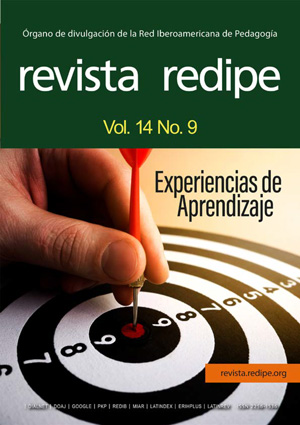Carrying capacity and environmental education for rural tourism on the ecological trails of el Encano, Nariño
Main Article Content
Keywords
Carrying capacity, Environmental education, Ecological trails, Rural tourism
Abstract
The township of El Encano is recognized as one of the most visited tourist destinations in the department of Nariño, due to its natural and cultural richness and, in particular, its outstanding landscape value. Nevertheless, the expansion of tourism in the area has not consistently been accompanied by educational processes or sustainable planning. In this context, the objective of the present study is to formulate a proposal that integrates rural tourism with environmental education, to be implemented along ecological trails as a strategy to foster both community economic development and the sustainability of natural resources.
Methodologically, the study adopts a qualitative design with a participatory approach, emphasizing territorial recognition, the identification of areas with high tourism value, and the estimation of tourism carrying capacity at three levels: physical, real, and effective. This methodological framework seeks to strengthen community capacities and develop skills that facilitate the effective implementation of rural tourism practices.
The results highlight the identification of two main ecological trails: the Quillinzayaco Ecological Trail, which offers a terrestrial route complemented by an aquatic return, and the El Motilón Ecological Trail. Both trails exhibit a wide range of resources, including remarkable scenic beauty, biodiversity, cultural elements, and opportunities for diverse activities such as photography, sports, and wildlife observation. These features expand access to new market segments and attract tourists with heterogeneous interests.
Despite these potentials, several limitations were identified. The community emphasized the need to improve infrastructure, enhance local training processes, and optimize the use of digital platforms and social networks. With respect to carrying capacity, the study determined that social and environmental constraints constitute the main limiting factors for tourism development. Additionally, management capacity is hindered by inadequate infrastructure and the limited training of local service providers, which are essential both for visitor management and for the stewardship of ecological areas.
In conclusion, the research contributed to strengthening local community capacities in three key dimensions: the identification of rural tourism attractions, the provision of quality tourism services, and the comprehensive management of ecological trails to ensure their long-term conservation.
References
Alcaldía de Pasto. (2024). Plan Municipal de Desarrollo 2024 – 2027 “Pasto Competitivo, Sostenible y Seguro”. Recuperado de https://concejodepasto.gov.co/wpcontent/uploads/2024/05/SEGUNDODEBATE-REDACCION-PMD-PASTO2024-2027-Vr.-16_05_24.pdf
Araújo Vila, N., Fraiz Brea, J. A., y Paul Carril, V. (2012). El turismo activo como modalidad turística en expansión. Análisis de la oferta de turismo activo en España. Contabilidad y negocios, 7(13), 59-70. https://www.redalyc.org/ pdf/2816/281623577006.pdf
Bernal, Y. H., & Parra, D. A. B. (2022). Redes sociales y comunitarias como ejes de inclusión y desarrollo de espacios turísticos. Revista Innova ITFIP, 11(1), 55-75. www.doi.org/10.54198/innova11.04
Chavez , F. R. C., Bernal, F. C., & Barquín, R. D. C. S. (2019). Turismo de naturaleza en el Área de Protección de Flora y Fauna (APFF) Nevado de Toluca, estado de México, a través de la geoinformática. Espacio y Desarrollo, (34), 33-56. https://doi.org/10.18800/espacioydesarrollo.201902.002
Cifuentes, M. (1992). Determinación de capacidad de carga turística en áreas protegidas con base en el análisis de impacto físico-ambiental. Turrialba: CATIE.
Corponariño. (2007). Características biofísicas de los páramos de Nariño. Recuperado de https://corponarino.gov.co/ expedientes/intervencion/biodiversidad/ tomo02caracteristicasbiofisicas.pdf
Corponariño. (2021). Determinantes Ambientales (DA) para el ordenamiento territorial del departamento de Nariño (Ficha técnica). Pasto: Corponariño.
Díaz, R., Valderrama, D. y Pachón, N. (2023). Educación ambiental en Colombia, perspectivas de análisis desde una revisión sistemática. Revista Electrónica EDUCYT, 14(Extra), 1313-1320.
García, D., López, L. y Balanta, V. (2022). Estrategias socioculturales y ambientales integradas para el fomento del turismo de naturaleza. Caraño Caquetá Colombia. I+D Revista de Investigaciones, 17(2), 43-57. https://doi.org/10.33304/ revinv.v17n2-2022004
Gobernación de Nariño. (2023). Estrategia Departamental para la Respuesta a Emergencias EDRE del Departamento de Nariño. Recuperado de https:// intranet.narino.gov.co/wp-content/uploads/2023/11/EDRE-Narino.pdf
Gonzáles, K. T. (2022). Diseño de una propuesta de turismo rural comunitario como alternativa para el mejoramiento de las condiciones de vida en la zona rural de Puerto López, Meta (Tesis de pregrado). Universidad Externado de Colombia, Bogotá DC.
IAvH, WWF Colombia, y ADC. (2004). Proyecto de incentivos para la Laguna de La Cocha como sitio RAMSAR. Recuperado de https://rds.org.co/apc-aa-files/ ba03645a7c069b5ed406f13122a61c07/ proy_incentivos_para_laguna_de_la_ cocha_como_sitio_ramsar.pdf
Ibáñez, R. (2016). Capacidad de carga turística como base para el manejo sustentable de actividades ecoturísticas en Unidades de Manejo Ambiental (UMA) de Baja California Sur (BCS). El periplo sustentable, (30), 37-76.
Leff, E. (2004). Racionalidad ambiental: la reapropiación social de la naturaleza [versión Adobe Acrobat PDF]. Recuperado de https://ru.iis.sociales.unam.mx/ bitstream/IIS/4937/1/Racionalidad_ambiental.pdf
Leff, E. (2006). Diálogo de saberes, saberes locales y racionalidad ambiental en la construcción social de la sustentabilidad. Recuperado de https://redinterculturalidad.wordpress. com/wp-content/uploads/2014/04/ dic3a1logo-de-saberes-saberes-locales-y-racionalidad-ambiental-en-laconstruccic3b3n-social-de-la-sustentabilidad-enrique-leff.pdf



